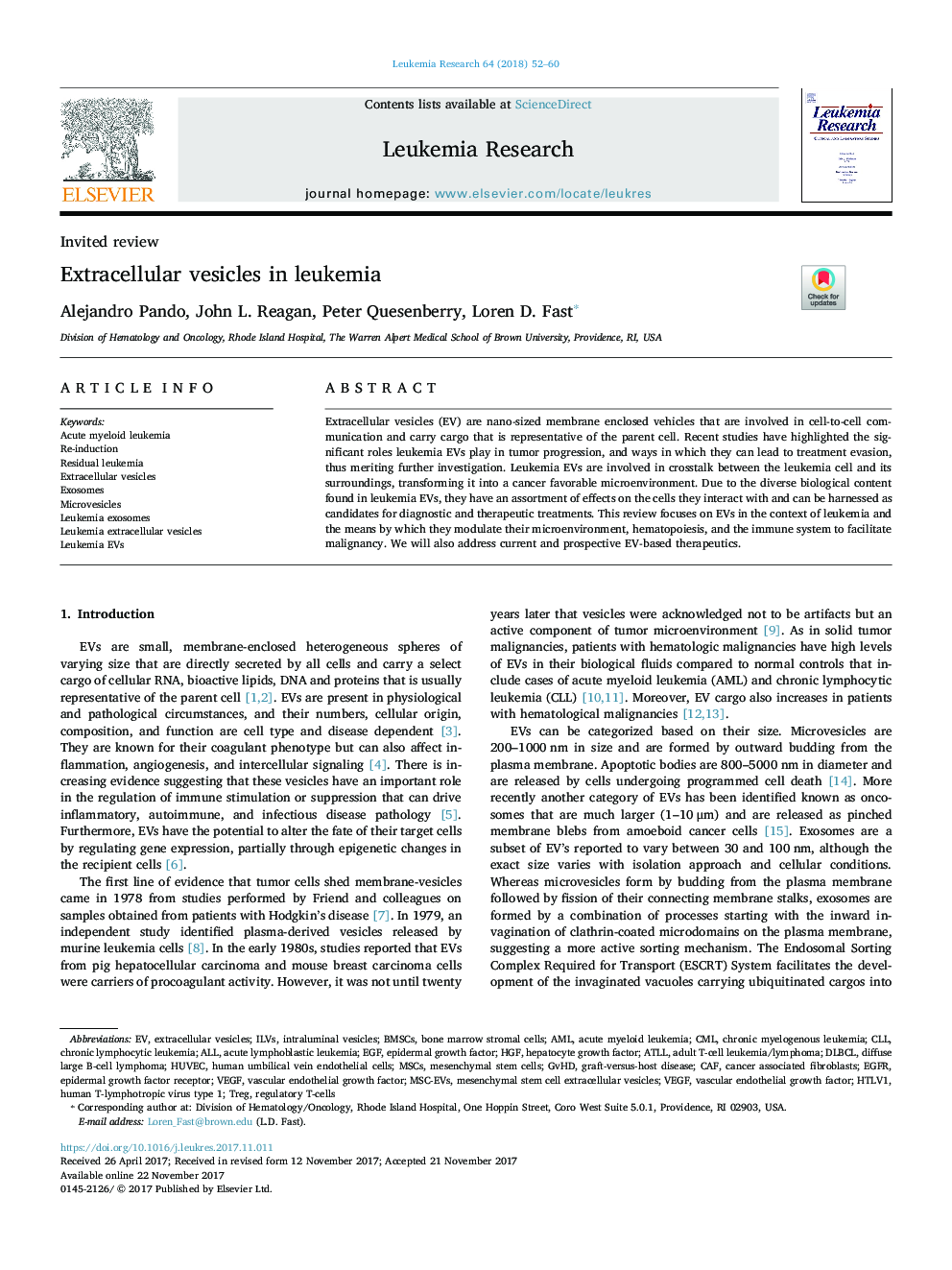| Article ID | Journal | Published Year | Pages | File Type |
|---|---|---|---|---|
| 8453410 | Leukemia Research | 2018 | 9 Pages |
Abstract
Extracellular vesicles (EV) are nano-sized membrane enclosed vehicles that are involved in cell-to-cell communication and carry cargo that is representative of the parent cell. Recent studies have highlighted the significant roles leukemia EVs play in tumor progression, and ways in which they can lead to treatment evasion, thus meriting further investigation. Leukemia EVs are involved in crosstalk between the leukemia cell and its surroundings, transforming it into a cancer favorable microenvironment. Due to the diverse biological content found in leukemia EVs, they have an assortment of effects on the cells they interact with and can be harnessed as candidates for diagnostic and therapeutic treatments. This review focuses on EVs in the context of leukemia and the means by which they modulate their microenvironment, hematopoiesis, and the immune system to facilitate malignancy. We will also address current and prospective EV-based therapeutics.
Keywords
EGFRAMLGvHDILVsATLLMicrovesiclesCLLHGFDLBCLTregCMLHUVECBMSCsMSCsCAFEGFregulatory T-cellsintraluminal vesiclesExosomesGraft-versus-host diseaseExtracellular vesiclesbone marrow stromal cellsHuman umbilical vein endothelial cellsMesenchymal stem cellsepidermal growth factorHepatocyte growth factorVascular endothelial growth factorVascular Endothelial Growth Factor (VEGF)Cancer associated fibroblastsDiffuse large B-cell lymphomaacute myeloid leukemiaAdult T-cell leukemia/lymphomaAcute lymphoblastic leukemiaChronic lymphocytic leukemiachronic myelogenous leukemiaALLHuman T-lymphotropic virus type 1Epidermal growth factor receptor
Related Topics
Life Sciences
Biochemistry, Genetics and Molecular Biology
Cancer Research
Authors
Alejandro Pando, John L. Reagan, Peter Quesenberry, Loren D. Fast,
